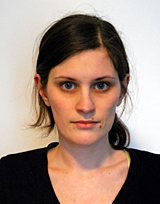Germicidal nappies just the beginning
It has been called both a killer plastic and an infectious weapon. The technology is now being tested by researchers at KTH and the tests include dressing cellulose fibres with a polymer which can kill bacteria and viruses, and kill off unpleasant odours.

Bandages, plasters, packaging, air and water filters, different clothes, diapers and sanitary napkins. Those are some of the areas where the research can be applied to, an area which Josefin Illergård, researcher at the School of Chemical Science and Engineering at KTH is working on.
“We have conducted research on making cellulosic fibres antibacterial with an environmentally friendly technology. The antibacterial function is attached to the fibres, and does not leak out into the nature. It kills bacteria by external influences, not internal,” says Josefin Illergård.
This means that there is a significant difference between Josefin Illergård’s and her research colleagues’ work, and the products that have recently been released onto the market as antibacterial or bactericidal.
Sportswear, socks and other things which have been impregnated to prevent odours from bacterial formation have been treated with the environmentally hazardous chemicals silver ions and triclosan.
“One of the advantages of surfaces covered with polymers is that bacteria will not develop any resistance,” says Josefin Illergård.
The polymer is strongly bound to the fibres which means that it doesn’t come off when, for example, the clothes are washed.
How has the antibacterial function of plasters, packages, diapers and other products been achieved?! Well, cellulose fibres for example, are negatively charged. The fibre is dipped in a positively charged polymer and the surface becomes positively charged. Bacteria and viruses are negatively charged and therefore stick to the positively charged polymer surface. From there, they cannot free themselves and reproduce, and therefore they die.
“We have used a multi-layer technology to achieve this, the same technology is used for example, to produce ultra-strong paper. Research time has for instance been spent to study these layers to see what happens. That is, a lot of basic research. If we understand exactly how it works on cellulose fibres, we will also be able to apply polymers to other materials such as glass,” says Josefin Illergård.
The supervisors Docent Monika Ek, Professor Lars Wågberg and the former PhD student Eva-Helena Vestman have in addition to Josefin Illergård, formed a part of the research project. The research is a collaboration with the hygiene giant SCA and the chemicals group BASF.
For more information, contact Josefin Illergård on 08-790 81 08 or josefika@kth.se.
Peter Larsson

